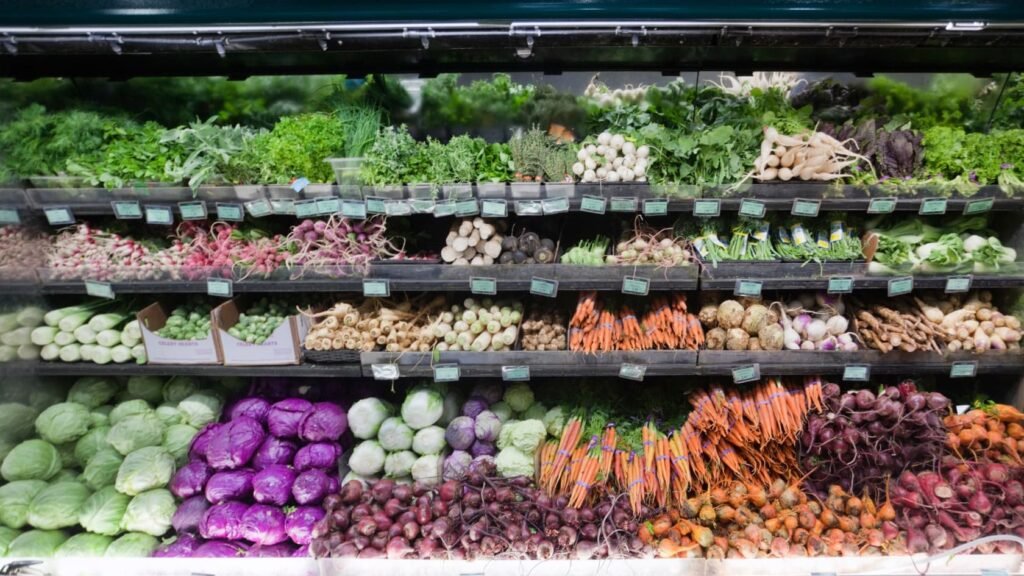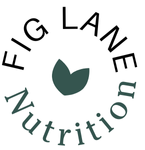Looking to follow a plant-based diet but don’t know what to get in the grocery store? I’m sharing a dietitian-approved plant-based grocery list designed to help you stock up on many of the same ingredients going in my cart every week. Whether you’re transitioning to a vegan or vegetarian plant-based lifestyle or simply looking to add more plant-forward meals to your week, this list will be helpful for you.

Let us start off by talking about what a plant based diet is. A plant based diet has a lot of overlap with many other diets. While it often gets confused with a vegan diet and a vegan diet can be considered plant-based, at its core, a plant-based diet is actually more similar to a Mediterranean or Flexitarian diet. It mainly focuses on plant-based foods as a majority of composition and has a smaller intake of animal products. Some people however, choose to exclude all animal products altogether or avoid just meats, making it similar to vegan or vegetarian diets.
Looking to learn more about the differences between plant-based and vegan diet check out:
Why a Plant-Based Diet?
One strong reason that leads many people to adopt a plant-based lifestyle is the potential long-term health benefits. Research shows an association between a plant-based diet and reduced risk of certain chronic diseases such as cardiovascular disease, certain cancers, and type 2 diabetes [3,4,5]. Since a plant-based diet overlaps with other diets, such as Mediterranean, flexitarian, vegetarian, and vegan diets, much of the research includes participants following these types of plant-based diets.
While some may be concerned about missing out on key nutrients, a plant-based diet does not have to mean completely excluding food groups like meats, eggs, dairy or fish. This makes it much easier to meet essential nutrient needs.
However, even if animal products are excluded, plant-based foods can still offer all essential vitamins (except for vitamin B12), minerals, fats, and protein. They also provide fiber and phytochemicals, as well, that can support our health.
With a little planning, it can be easy to meet nutrient needs while reducing or excluding consumption of animal-based foods.
Key Principles of Plant-Based Nutrition
As mentioned above it is possible to obtain almost all of our nutrient needs through even a vegan plant-based diet. However, it is important to note it is crucial to obtain vitamin B12 from other sources, such as fortified foods or supplementation. Otherwise eat a variety of nutrient dense foods from all food groups to help meet nutrient needs particularly iron, Calcium, and Protein.
Check out our posts on:
“Top 9 Plant Based Calcium Sources”
“11 Top Vegan Meat Alternatives”
Section 3: Plant-Based Grocery List
Produce Section

My produce selections often depend on what is in season as the quality can really change depending on the time of year.
- Fruits:
- Spring/Summer: Berries (blueberries, raspberries, blackberries, strawberries, cherries)
- Fall/Winter: apples, bananas, citrus fruits (oranges, grapefruit, pomelo for eating and lemon and lime for seasoning)
- Year round: avocados, grapes, kiwi, etc.
- Vegetables:
- Summer/Fall/Winter: cruciferous vegetables (broccoli, cauliflower, cabbage, Brussels sprouts)
- Fall and Winter: root vegetables (carrots, beets), eggplant, and onions
- Summer: peppers, tomatoes, mushrooms, zucchini.
- Year round: Leafy greens (spinach, kale, arugula) Herbs and spices (Fresh basil, cilantro, parsley, garlic, ginger, etc.)
Grains and Starches
- Whole grains: Quinoa, brown rice, farro, barley, bulgur, oats.
- Starchy vegetables: Sweet potatoes, potatoes, winter squashes, corn.
Legumes, Beans, and Plant-Based Proteins
Plant based protein options come in all different ways from canned, to fresh, dried, and frozen. Most of these options have a long shelf life giving you the option to stock up when it’s on sale.
- Beans: Black beans, chickpeas, kidney beans, pinto beans, lentils.
- Tofu, Seitan, and tempeh: Rich sources of plant-based protein.
- Edamame and other soy-based products.
- Peas.
Many of these protein sources not only give you plant based protein but also a boost in your fiber intake as well.
Nuts, Seeds and Nut Butters
- Nuts: Almonds, walnuts, cashews, pistachios.
- Seeds: Chia seeds, flaxseeds, hemp seeds, pumpkin seeds, sunflower seeds.
- Nut butters: Peanut butter, almond butter.
Plant-Based Dairy Alternatives
- Milk alternatives: Almond, oat, soy, pea, non-dairy beverages.
- Yogurt alternatives:, soy yogurt, almond milk yogurt (Looking for high protein plant based yogurts? Check out: “3 High Protein Plant Based Yogurt Alternatives [Dietitian Tested]”).
- Cheese alternatives: Cashew-based cheese, nutritional yeast for a cheesy flavor and added vitamin B12.
Frozen & Prepared Foods
Frozen produce is great for busy times, out of season produce, or to save some money. Produce items are often times just as nutritious or can be more nutritious as their fresh items counterparts.
- Frozen vegetables: A convenient and nutritious option for busy days.
- Frozen fruits: Great for smoothies and adding to oatmeal or desserts.
- Plant-based ready meals or veggie burgers (for convenience. However keep in mind you may need to check the nutrition facts to see what supports your goals as some products can be made to taste and feel like meat and some are to replace protein and provide other nutrients).
Condiments & Staples
- Olive oil and avocado oil (check out “11 Plant-Based Fat Sources”).
- Plant-based protein powder (pea, soy, hemp, brown rice, etc.).
- Tahini, hummus.
- Plant-based snacks for on-the-go.
Meal Planning Tips
While having a list of plant-based grocery list is great, it’s also important you decide what you’re going to do with your groceries. That way they don’t get pushed to the back of the refrigerator and go bad.
Choose foods from the list to create a plant-based meal plan. Check the food you’re using so you know what you’ll need to get. You can find a template for your plant-based meal plan here. This can save you a few bucks at the grocery store and time throughout the week.
Don ‘t know what to make? You can check out our blog for plant-based recipes to use or to gain inspiration.
Also, shopping on a budget? Check out “Budget Plant-Based Diet [Dietitian Written]”
Nutritional Considerations & Tips
While switching to a plant-based diet one of the benefits can come from additional fiber. However, something many don’t know about fiber is that it should be increased gradually and it is importantly to stay well hydrated. If these are not done, one could experience bloating and constipation.
Just like any big change, sometimes it’s more realistic to take baby steps. Start with one additional plant-based meal, gradually working to every other day, and then to 5 days a week or more.
Conclusion
Transitioning to a plant-based diet or plant forward eating style doesn’t have to be overwhelming. With this plant-based grocery list, and a little planning, you can get a variety of nutritious foods that can support meeting your nutrient needs and your plant based goals. Whether you decided to go plant-based for health, environmental, or just to try something new, this list is a great starting point. Remember a plant-based does take balance and may require you to get a little creative with new ingredients or dishes. Download our free plant based shopping list, make that plant-based meal plan, and head to the store with confidence on your plant-based journey.
